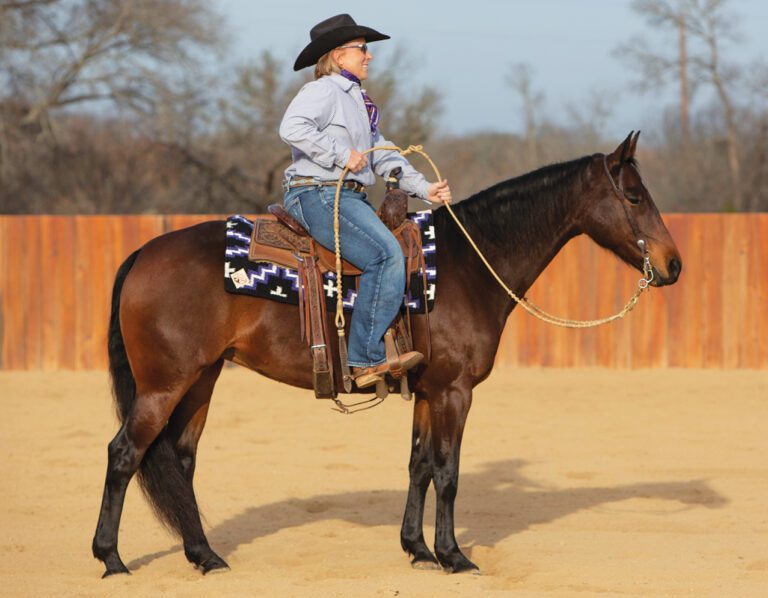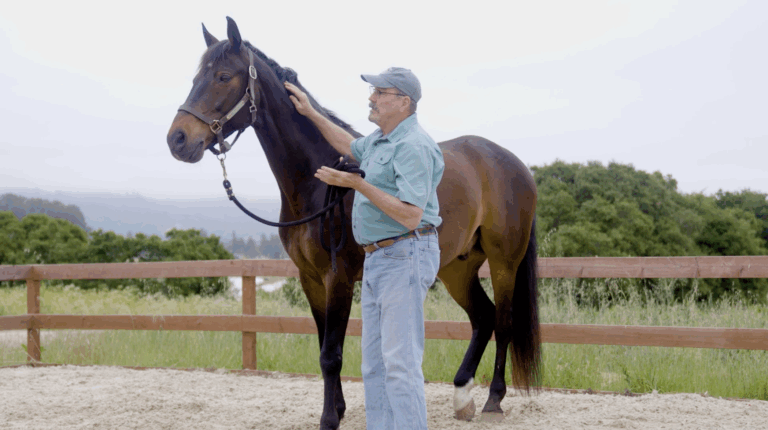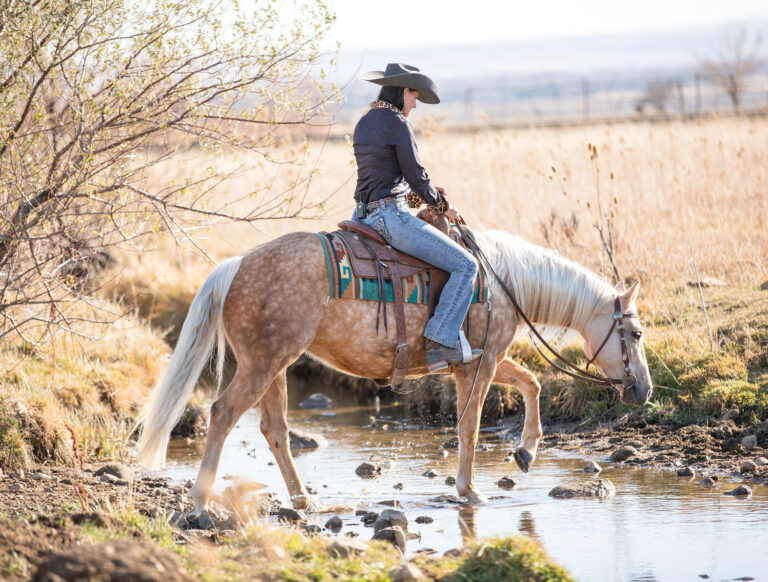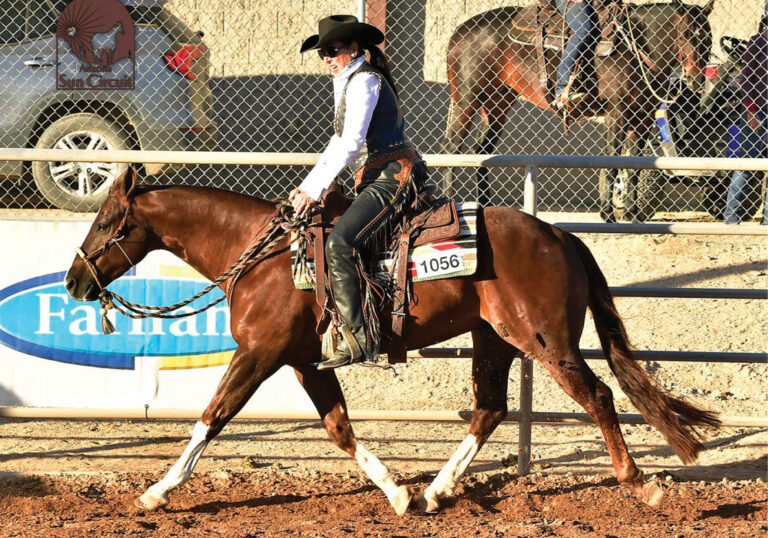Want to try something really different? Read on.
In the February 2018 issue of Horse&Rider, we introduced you to the hot new sport of working equitation. WE, as it’s called, began in Europe, came to the U.S. via fans of Spanish horse breeds, and is now catching fire among other Western-horse enthusiasts. (If you missed the article, you can get a quick primer on the sport here.)
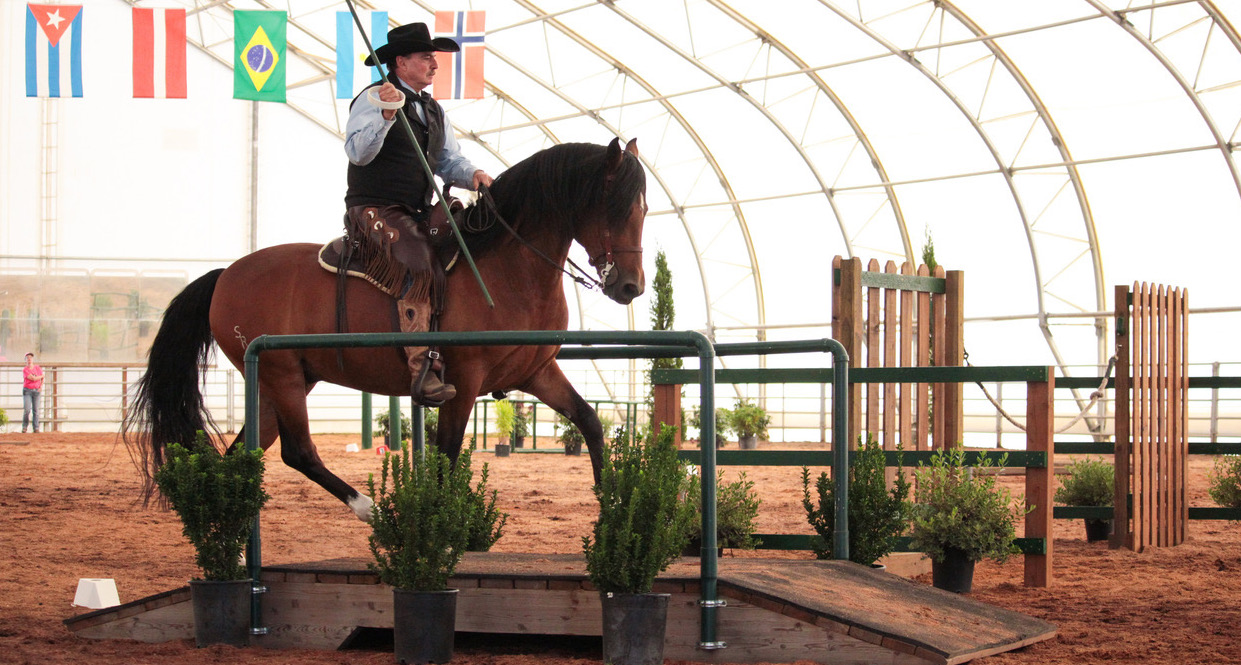
From the feedback you gave us, it was clear you were interested, and it’s not hard to understand why. WE is like a combination of trail class, speed class, and Western dressage test—all of it structured to be wonderfully accessible to the novice.
So, would you like a tiny taste of it? We asked Rob Zimmerman of South Ridge Farms in Ridgefield, Washington (host to clinics of the famous Pedro Torres Academy of Working Equitation) to give us an introductory exercise to try. It’s from the obstacle part of WE and involves removing a pole from a barrel, then replacing it in a different barrel.
Sounds pretty straightforward, but there’s more to it than you’d think!
You’ll need: Two large barrels (trash cans work) and an 8-foot wooden pole. (Bamboo is best, although an inexpensive landscaping pole–used to support young trees–also works.) Paint or otherwise mark one end of the pole to signify the tip, and place the barrels at least 40 feet apart in your arena.
From the ground: Begin unmounted to accustom your horse to the pole and the barrels. The number 1 rule, says Rob, is to take your time.
“Let your horse smell, touch, and even taste the pole and barrel if he wants,” says the trainer. “Then slide the pole around in the barrel to let him hear the sound of it and see the movement. Start softly, working up to more aggressive taps.”
Then rub the pole gently all over your horse’s body.
“In this sport, the rider is going to accidentally bump his or her mount with the pole, so it’s essential your horse becomes acclimated to that,” cautions Rob.
Then repeat the entire sequence at the second barrel.
In the saddle: Once your horse is comfortable from the ground, return to the first barrel, mount up, and continue the desensitizing. Grasp the pole (its tip should be up) and move it around within the barrel. Then, still holding on to the pole, ride your horse around the barrel at a walk, continuing to move the pole.
“If all is good, pick up the pole, reaching down as far as possible, then adjust your grip to about the center of the pole,” instructs Rob. “Carry it tucked under your arm, with the tip pointed down.”
Now ride at a walk to the second barrel and place the pole into it as you’re riding past.
“The butt end of the pole must go in first, and this can be tricky because you don’t want it to bounce back out,” cautions Rob. “Let it slide out of your hand, releasing it in a backwards position—that is, away from the direction you’re riding in.”
Repeat: Now ride the exercise again starting from the second barrel. Retrieve the pole, ride back to the first barrel, and place the pole back into it as you ride past. The variations for practice are endless, and once you master it at a walk, try it at a jog, then a brisk trot, and finally a lope.
First, though, have a look while Rob rides the ease-of-handling obstacle portion of a WE class. Starting at about 4:34 in the video, you’ll see him remove a pole from a barrel, use it to skewer a ring, then return the pole to another barrel.
That’s the full maneuver, and if you’d like to learn more about it—and all the other fascinating parts of this fascinating sport—find yourself an instructor (see below) and get started!
LEARN MORE ABOUT WORKING EQUITATION (WE)

